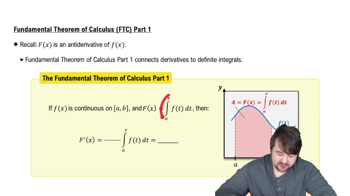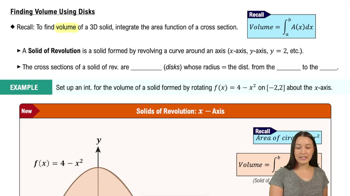The radius r of a circle is measured with an error of at most 2%. What is the maximum corresponding percentage error in computing the circle’s
a. circumference?
 Verified step by step guidance
Verified step by step guidance Verified video answer for a similar problem:
Verified video answer for a similar problem:



 5:53m
5:53mMaster Finding Differentials with a bite sized video explanation from Patrick
Start learning